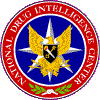ARCHIVED
![]() To Contents
To Next Page To Publications Page
To
Home Page
To Contents
To Next Page To Publications Page
To
Home Page

|
National Drug Intelligence Center Utah Drug Threat Assessment March 2003 Overview
Utah ranks thirty-fourth in population with more than 2.2 million people residing in its 29 counties. Nearly 75 percent of the population is concentrated in Davis, Salt Lake, Utah, and Weber Counties. According to the 2000 U.S. Census, the population of Utah is 89.2 percent Caucasian, 4.2 percent other, 2.1 percent two or more races, 1.7 percent Asian, 1.3 percent American Indian/Alaska Native, 0.8 percent African American, and 0.7 percent Pacific Islander. In addition, 9 percent of Utah residents identify themselves as Hispanic or Latino. With a median age of 26, Utah has the youngest population of any state in the nation and is the only state with a median age under 31.
The state has a well-developed transportation infrastructure, and its location makes Utah an important transit area for licit and illicit goods destined for areas throughout the United States. Private and rental vehicles and commercial trucks commonly are used to transport drugs into and through Utah. Package delivery services and couriers aboard commercial aircraft and buses are used to a lesser extent. The highways in Utah are used to facilitate the transportation and distribution of illicit drugs. Interstates 15 and 84 converge in Ogden and connect California with Idaho, Montana, and Oregon through Utah. Interstate 80, an east-west highway, connects Utah with California, Nevada, and Wyoming. In addition, I-70 begins at I-15 in southwest Utah and links the state to points east. U.S. Highways 89 and 191 are north-south highways that traverse Utah and connect it with Canada and Mexico through the states of Arizona, Idaho, Montana, and Wyoming. Most illicit drugs are transported into and throughout Utah on interstate, state, and U.S. highways via private and rental vehicles, commercial trucks, and buses. Law enforcement officials in Utah frequently seize drugs on highways, often as part of Operation Pipeline initiatives.
One international airport--Salt Lake City International Airport--and many smaller airports service Utah. Salt Lake City International Airport is the twenty-fourth busiest airport in passenger traffic in the United States; over 300 flights depart daily. Numerous remote airstrips are scattered throughout the state. Operation Jetway data indicate that drugs have been transported into the state on aircraft from California, Kentucky, and Texas; however, drug seizures from aircraft are infrequent.
Mexican criminal groups dominate the transportation and wholesale distribution of methamphetamine, heroin, cocaine, and marijuana throughout Utah. Most of the illicit drugs transported into Utah by Mexican criminal groups are destined for other areas of the United States. However, Mexican criminal groups also distribute wholesale quantities of illicit drugs throughout the state. According to law enforcement authorities in Utah, the Mexican criminal groups that transport and distribute drugs in Utah typically have a very structured hierarchy of members and usually are controlled by a single family. These Mexican criminal groups distribute illicit drugs almost exclusively to Mexican nationals and usually refuse to sell to Caucasians at the wholesale level. Mexican criminal groups, local independent dealers, street gangs, and outlaw motorcycle gangs (OMGs) all distribute illicit drugs at the retail level in Utah. Mexican criminal groups distribute methamphetamine produced in Mexico, California, and southwestern states, powdered cocaine, heroin, and marijuana at the retail level. Caucasian local independent dealers distribute much of the methamphetamine and marijuana produced in the state. Street gangs are retail distributors of methamphetamine, heroin, powdered and crack cocaine, marijuana, and MDMA. While some street gangs in the state are composed of members of one race or ethnicity, many are multiracial or multiethnic. Gangs may be defined as African American, Asian, Hispanic, or Mexican even though they have a diverse membership. Sureņos 13 and Tongan Crip Regulators are significant street gangs in Utah. OMGs distribute retail quantities of methamphetamine and, to a lesser extent, other illicit drugs. The most active OMGs in Utah are Sundowners and Barons.
Utah residents typically abuse illicit drugs at rates that are comparable to or lower than nationwide rates. According to the 1999 and 2000 National Household Survey on Drug Abuse (NHSDA), 5.0 percent of individuals surveyed in Utah reported having abused an illicit drug at least once in the month prior to the survey, compared with 6.3 percent nationwide. In many major drug categories, Utah high school students report lower incidences of abuse than high school students nationwide. According to the 2001 Youth Risk Behavior Survey (YRBS), the percentage of students who reported having abused marijuana, cocaine, or methamphetamine at least once in their lifetime was lower than the percentage nationwide. The percentage of federal sentences in Utah that are drug-related decreased over the past several years and is lower than the national percentage. According to data from the U.S. Sentencing Commission (USSC), the percentage of federal sentences that were drug-related in Utah decreased from 20.6 percent in fiscal year (FY) 1997 to 17.2 percent in FY2001. In FY2001 the percentage of federal sentences nationwide that were drug-related was 41.2 percent. The total financial impact on Utah's government from substance abuse is significant. In 1998, the most recent year for which these data are available, Utah spent nearly $500 million--approximately $242 per resident--on substance abuse-related costs. This accounted for almost 12 percent of the state's total budget and was the fifteenth highest percentage in the nation.
|
||||||||||||||||||||||||||||||||||||||||||||
End of page.